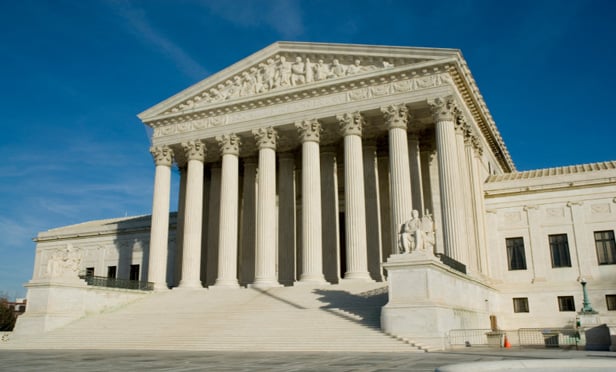Columns & Departments

Real Property Law
No Tacking of Adverse Possession Claims<br>Issues of Fact Preclude Injunction Requiring Removal of Encroachments<br>Statute of Limitations Bars Foreclosure Claim<br>Permission Bars Prescriptive Easement Claim
Features

The Struggle to Keep Up With Data Privacy Regulations
Data privacy is one of the most important issues facing corporations, and amidst the challenges of protecting customer data, the regulatory landscape that oversees it is shifting on an almost daily basis. With changes occurring at such a rapid pace across all corners of the globe, it's not surprising that organizations are increasingly finding themselves inadequately prepared to deal with these regulations.
Features

Hiring Practices and the FCPA
While laws such as the FCPA do not necessarily prohibit hiring individuals with criminal records or bad credit records or who are former government officials, they do require employers to identify these individuals and assess whether their hire would pose a threat, violate the laws outright or impose an administratively difficult burden due to the need to monitor their activities.
Features

A Reasonable Royalty Rate Must Be Tied to Facts
<b><i>Exmark Manufacturing Company Inc. v. Briggs & Stratton Power Products Group, LLC</b></i><p>The rate of the reasonable royalty awarded to a successful patent plaintiff must be based on the facts of the case. A damages expert cannot merely pay lip service to the <i>Georgia-Pacific</i> factors and then “pluck” a royalty rate from thin air.
Features

Meet the Lawyer Working on Inclusion Rider Language
At the Oscars in March, Best Actress winner Frances McDormand made “inclusion rider” go viral. But Kalpana Kotagal, a partner at Cohen Milstein Sellers & Toll had already worked for months to write the language for such provisions. Kotagal was developing legal language for contract provisions that Hollywood's elite could use to require studios and other partners to employ diverse workers on set.
Features

The Death of the Law Firm Partnership Vote?
<b><i>With an Eye on Efficiency, Firms Are Ditching Old Methods for a More Corporate Form of Governance</b></i><p>A growing number of firms in the United States and the United Kingdom are eschewing historical partnership norms in favor of more centralized management, and with that comes fewer and fewer partnership votes.
Features

<i>Simon v. Starbucks</i>: Preliminary Injunction Granted to Prevent Store Closings
While the court will not have the opportunity to rule on the merits of the case, the facts relied upon by the Indiana Superior Court and the conclusions reached in rendering its decision are still instructive for practitioners drafting continuous-use provisions and advising clients on potential breaches or anticipatory breaches of such provisions.
Features

SCOTUS: No Safe Harbor Protection Where Financial Institutions are Mere Intermediaries
The Supreme Court's decision and analysis are instructive for both bankruptcy and corporate practitioners, and will likely yield significant returns for estate beneficiaries.
Features

'Professional Development:' Embracing and Improving Your Leadership Style
To achieve your highest potential, to be more “actualized,” you must embrace your leadership style. What is your style? Are you an Achiever, Affirmer, or Asserter? Which of the Nine Attributes of Actualized Leaders do you need to focus on to improve your leadership?
Features

Regulating Interior Landmarks: New York Court Says Duties Don't End
What powers does the New York City Landmarks Preservation Commission have to require a building owner to maintain a mechanical clock located in the interior of a building? In <i>Save America's Clocks, Inc. v. City of New York</i>, New York's Appellate Division, First Department, held that the Commission had power to require maintenance of the clock, and to require public access to it.
Need Help?
- Prefer an IP authenticated environment? Request a transition or call 800-756-8993.
- Need other assistance? email Customer Service or call 1-877-256-2472.
MOST POPULAR STORIES
- The 'Sophisticated Insured' DefenseA majority of courts consider the <i>contra proferentem</i> doctrine to be a pillar of insurance law. The doctrine requires ambiguous terms in an insurance policy to be construed against the insurer and in favor of coverage for the insured. A prominent rationale behind the doctrine is that insurance policies are usually standard-form contracts drafted entirely by insurers.Read More ›
- A Lawyer's System for Active ReadingActive reading comprises many daily tasks lawyers engage in, including highlighting, annotating, note taking, comparing and searching texts. It demands more than flipping or turning pages.Read More ›
- The Brave New World of Cybersecurity Due Diligence in Mergers and Acquisitions: Pitfalls and OpportunitiesLike poorly-behaved school children, new technologies and intellectual property (IP) are increasingly disrupting the M&A establishment. Cybersecurity has become the latest disruptive newcomer to the M&A party.Read More ›
- Abandoned and Unused Cables: A Hidden Liability Under the 2002 National Electric CodeIn an effort to minimize the release of toxic gasses from cables in the event of fire, the 2002 version of the National Electric Code ("NEC"), promulgated by the National Fire Protection Association, sets forth new guidelines requiring that abandoned cables must be removed from buildings unless they are located in metal raceways or tagged "For Future Use." While the NEC is not, in itself, binding law, most jurisdictions in the United States adopt the NEC by reference in their state or local building and fire codes. Thus, noncompliance with the recent NEC guidelines will likely mean that a building is in violation of a building or fire code. If so, the building owner may also be in breach of agreements with tenants and lenders and may be jeopardizing its fire insurance coverage. Even in jurisdictions where the 2002 NEC has not been adopted, it may be argued that the guidelines represent the standard of reasonable care and could result in tort liability for the landlord if toxic gasses from abandoned cables are emitted in a fire. With these potential liabilities in mind, this article discusses: 1) how to address the abandoned wires and cables currently located within the risers, ceilings and other areas of properties, and 2) additional considerations in the placement and removal of telecommunications cables going forward.Read More ›
- Guidance on Distributions As 'Disbursements' and U.S. Trustee FeesIn a recent case from the Bankruptcy Court for the District of Delaware, In re Paragon Offshore PLC, the bankruptcy court provided guidance on whether a post-plan effective date litigation trust's distributions constituted disbursements subject to the U.S. Trustee fee "tax."Read More ›
